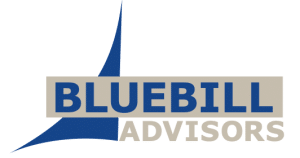At the recent Worldware Conference in Santa Clara, California, I was delighted to learn about how a high-tech company was achieving great success in internationalizing their software through crowdsourcing. The story gets more interesting. This was not back-room software plumbing but an innovative application, none other than Second Life, a virtual world and a social-networking MMORG (Massive Multi-Player Online Role-Playing Game). Launched by Linden Lab in 2003, Second Life enables its users, called residents, to interoperate with a virtual world through software called a Second Life Viewer. Residents can socialize, participate in group activities, and create and trade virtual property. According to Google, there are over 9 million residents currently on Second Life.
I attended the presentation, “Brave New (Virtual) World,” and had an opportunity to catch up with Danica Brinton, Director of International Strategies and Localization at Linden Lab. Here’s what she had to say.
Kadie: When did Linden Lab realize the importance of internationalization?
Brinton: Around the middle of 2008, Linden Lab realized some discrepancies between U.S. and international business. While 60% of the residents and twice the new registrations were from outside the U.S., revenue and retention numbers, while still healthy, indicated a gap in the localized user experience.
Kadie: What happened when you entered the scene?
Brinton: I joined the company in June. When I checked things out, I was stunned. I discovered that we were paying $40,000 per quarter to LSPs. What were we getting? The viewer was translated only partially into 3 languages, and was nearly incomprehensible. The website was translated partially into 2 key languages. In both cases there were a lot of localization bugs. On the flip side, hundreds of wiki-based Help pages were translated quite well into 8 languages, which was pretty darn good. An interesting trend…
Kadie: So what did you do?
Brinton: Although we were a small company, when I showed my management the opportunity they were very supportive…but with limited funding. So we had to get creative. We enlisted the help of power users to translate the application and website. To ensure quality control, we set up a repeatable localization framework, with translation, editing, testing, and end user review. We established a tier system of resident translators, drawing on our super-users. We built and acquired localization tools to manage translation memories and the localization process, and installed a locale-based ROI calculator to manage costs. Finally, we hired 3 in-house linguists. So you can see, it was a hybrid of crowdsourcing from the Second Life community on the one hand, and our in-house linguists and contracted translation agencies on the other.
Kadie: How did you divide up the work?
Brinton: Who did what depended on the language tier. Let’s look at the viewer, for example. For tier-1 languages, we developed the glossary, did the translation, and collaborated with the Second Life community on the editing, QA, and some of the glossary. For tier-2 languages, the Second Life community did nearly everything.
Kadie: What kind of results did you achieve?
Brinton: Less than a year later, I can truthfully say that we achieved some dramatic results. We now translate the viewer and the website into 10 languages, and expect to reach 16 in May. The active residents from outside the U.S. grew to 64% of the user base, and new registrations are now more than 2.5 times the U.S. Even better, international revenues have surpassed U.S. domestic revenues. Between the Viewer, the website, and the knowledge base, we now regularly localize over 150,000 words per language.
Kadie: What’s next for localization at Linden Lab?
Brinton: Strangely enough, past is prologue. This new localization program is helping to increase customer satisfaction and bolster an affinity group. You can even say that community-driven translation is building brand advocacy. Some of the elite power users are evolving into business partners. Localization is not only supporting our business, it’s helping to grow it.
The Content Globalization practice at the Gilbane Group closely follows and blogs on the role of multilingual communication in social networking (see interview with Plaxo).

